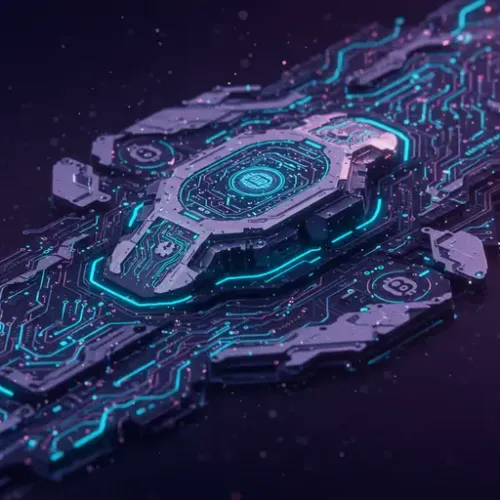How artists are embracing artificial intelligence to create works of art

The AI Report
Daily AI, ML, LLM and agents news
Unleashing Creativity: How Artists Are Embracing Artificial Intelligence
Artists throughout history have consistently embraced new technologies, not as replacements for human ingenuity, but as powerful extensions of their creative potential. From the earliest pigments to the advent of photography, each innovation has reshaped artistic practice. Today, Artificial Intelligence (AI) stands as the latest frontier, and far from being a threat, it offers unprecedented opportunities for artistic expression and development.
According to Rebecca Xu, a leading professor of computer art and animation, AI is simply another tool in the artist's ever-expanding toolkit. Her research at the College of Visual and Performing Arts explores precisely how emerging technologies like AI can enhance the creative process across diverse art forms, from data visualization to interactive installations. Xu's own acclaimed work, "Péripéties: Fragile Sovereignties," incorporates generative programming and AI, showcasing its profound capabilities.
AI: An Enhancement, Not a Replacement for Creativity
The conversation around AI in the arts often sparks apprehension, with some fearing it will diminish human creativity. However, Professor Xu firmly believes that AI is having a profoundly positive impact. "Being in the field of digital art, I’m always dealing with the impact of new technology," she explains. "AI is not that different from other technological enhancements. Through innovation, AI can enhance human creativity." While it does prompt fascinating questions about the nature of creativity itself, the core message is clear: AI can amplify human imagination.
Learning from History: The Camera's Transformative Power
To understand AI's current role, Xu draws a powerful parallel to the introduction of the camera. When photography first emerged, it sent shockwaves through the art world. Traditional painters, particularly those focused on realism, feared their craft would become obsolete. Yet, history tells a different story. The camera didn't replace painting; it liberated artists, pushing them to explore new forms of expression, leading to movements like Impressionism and Cubism. "When new technology or techniques come along," Xu notes, "that’s when you start to see new art forms; that’s how we progress and move forward in the art world." Art, at its heart, remains about self-expression, and AI, like a paintbrush or a camera, is merely a medium.
Practical Steps for Integrating AI into Your Creative Process
For artists looking to harness the power of AI, Professor Xu offers actionable advice:
- Ignite Idea Generation: Begin leveraging AI during the preproduction phase. Use it to develop concepts, flesh out stories, and experiment with character designs. AI can provide invaluable inspiration, helping you explore diverse visual styles and directions to perfectly fit your artistic vision.
- Sharpen Technical Skills: AI tools can serve as an excellent training ground for honing technical proficiencies. Want to understand the nuances between a long, medium, and close-up shot, or how different elements combine? AI can offer practical insights and demonstrations, accelerating your learning curve.
- Embrace Collaboration, Not Substitution: While AI offers powerful capabilities, the goal is to produce your own original work. View AI as a collaborative partner, a tool to assist and expand your reach, rather than a substitute for your unique human input.
It's also crucial to remember that embracing AI is a choice, not a mandate. The misconception that one must use AI to remain relevant is unfounded. Traditional art forms—paintings, ceramics, sculptures—retain their profound value. In fact, the integration of AI may paradoxically make us appreciate these traditional artworks even more, highlighting the irreplaceable human touches and lived experiences that shape them.
The Future of Art: A Collaborative Landscape
Ultimately, AI opens up exciting new ways to create, teach, and experience art. By understanding its capabilities and applying it thoughtfully, artists can unlock new dimensions of expression, ensuring that human creativity continues to evolve and flourish in an increasingly technologically rich world. The future of art is not one where machines replace artists, but one where human imagination, amplified by intelligent tools, reaches unprecedented heights.

The AI Report
Author bio: Daily AI, ML, LLM and agents news
